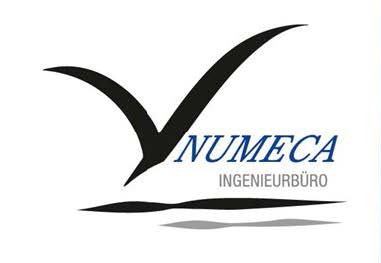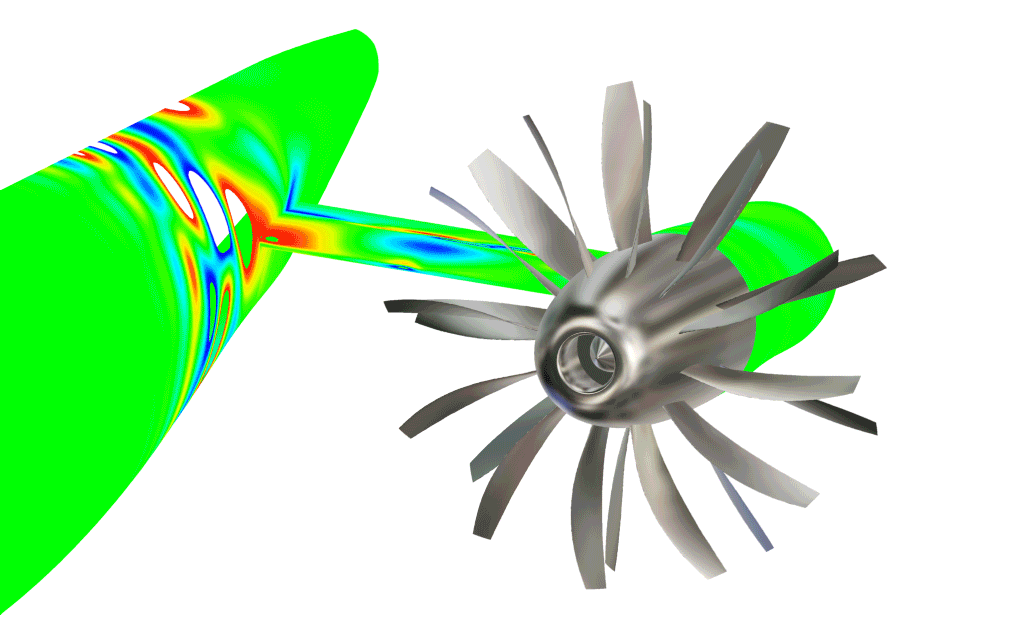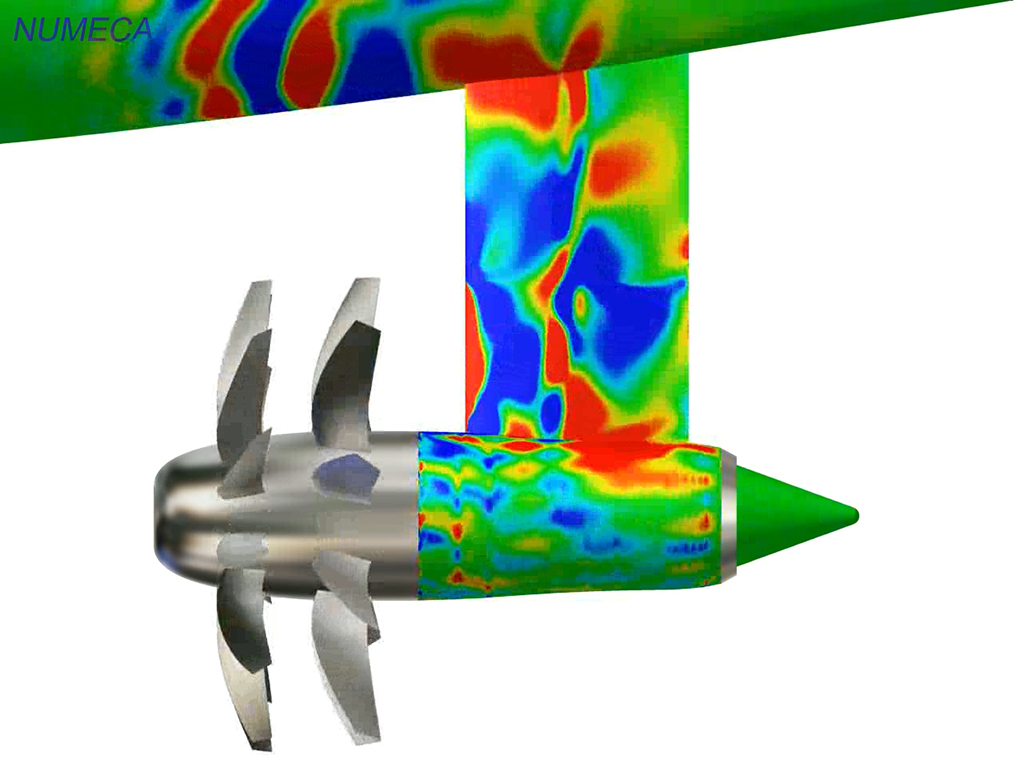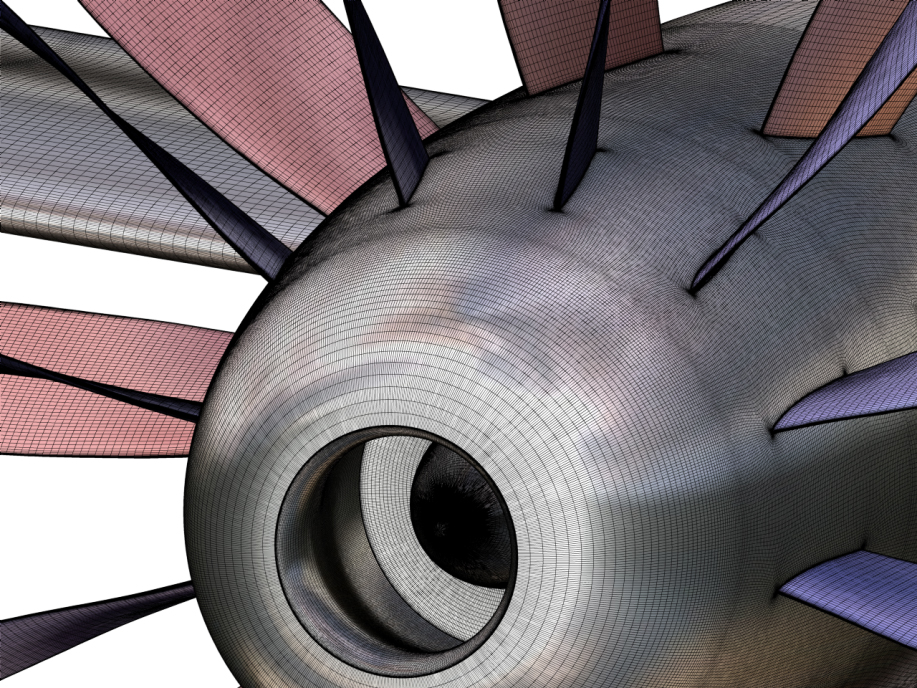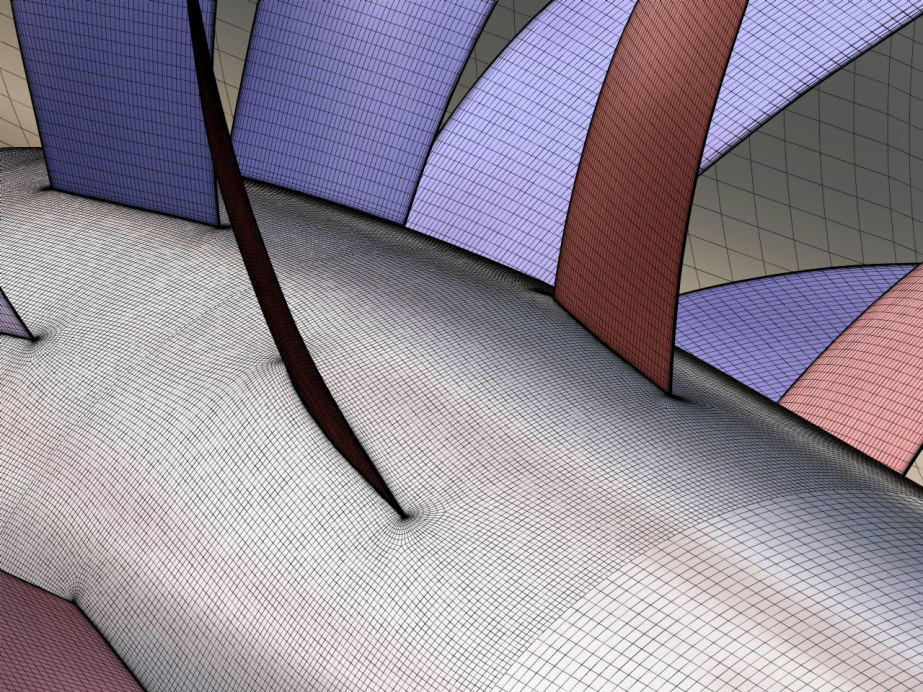Open Rotor
Aerospace | Open Rotor | NLH | Rank-2 | FINE™/Turbo | AutoGrid5™
ASME GT2014-25061
Applying an Extended Nonlinear Harmonic Method to a CROR Configuration with Emphasis on the Acoustic Signature
Teaser: Need to run a Contra Rotating Open Rotor overnight? Try the Nonlinear Harmonic Method and save a factor of 1,000 in CPU time.
Fuel consumption and efficiency are the key challenges of the aviation industry in times of climate change. An interesting propulsion option is the Contra Rotating Open Rotor (CROR): in short- and medium-range aircrafts these engine configurations can save up to 25% of the specific fuel consumption and reduce the CO2 emission up to 20%, in comparison to the recent generation of turbofan engines due to their high propulsion efficiency. On the downside, CROR configurations are prone to a higher acoustic signature as compared to ducted fans. The reduction of noise is therefore an important objective in the design process.
Technically a CROR in a tractor configuration (the propeller is pulling) is a rotor-rotor-stator (R1-R2-S1) problem. A stator? Yes, the pylon on which the engine is mounted to the fuselage is considered a stator here.
It is this specific application where the innovative approach of the Nonlinear Harmonic method (NLH) yields tremendous advantages in terms of speed-up and memory requirements compared to traditional time-stepping methods. We all know that the NLH method is typically about 2 orders of magnitude faster than time-stepping, but here the benefit is overwhelming, making the NLH the only viable method to capture a full CROR including nacelle, pylon, and fuselage. Why? Designers are keen to detune the entire system to avoid self-excitation. They did here so as well. Both rotors do not only feature different blade counts. To make CFD engineers’ life even more difficult, they are also turning at slightly unequal speeds. Tackling this problem with a traditional time-stepping unsteady method would require 360° meshing and at least a heartbreaking 1,300 full revolutions to obtain a periodic flow field. And the NLH? Meshing one blade passage each is all it takes, plus a standard steady-type convergence rate. The speed-up: more than 7,000. (Yes, seven thousand!)
The results of an unsteady Nonlinear Harmonic analysis do not only deliver detailed insights into the flow field in and around the CROR but also into the acoustic excitations as well as the structural loads on the fuselage, which are significant since the rotors are propagating serious pressure fluctuations. How serious? Well, we would not recommend booking a seat which is located in the plane of rotation of one of these rotors – the pressure fluctuation is equivalent to a sound pressure level of 160dB. But this is exactly why we are doing these calculations – to make a CRORs a viable and economically friendly option for future air transport. No need for flight shaming anymore.
Interested in details? Read more at ASME GT2014-2506 or contact us!
